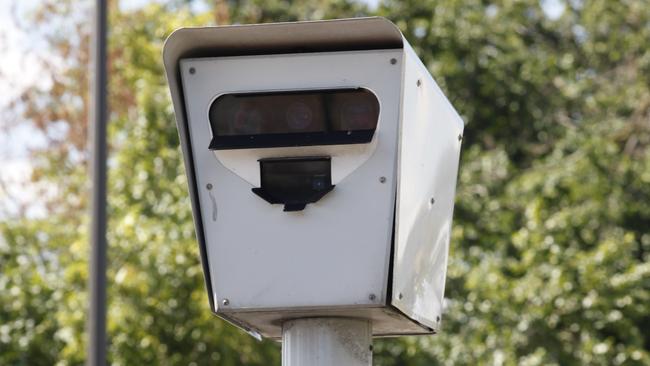Supreme Court finds fixed traffic camera testing ‘invalid’, throwing the system into chaos
Thousands of red light traffic camera fines are now open to court challenge after a Supreme Court decision found that testing of fixed red light cameras is not valid.

Thousands of red light offences caught by traffic cameras are under a cloud, after the Supreme Court overturned a motorist’s traffic fine.
The bombshell Supreme Court judgement overturned a red light running offence on the basis that the state’s camera testing regimen is invalid.
The court found police must now test cameras when a private vehicle, or police test vehicle, is actually running a red light.
Currently police only test if a car sets off the camera when going past on a green light, because red light testing is too dangerous and difficult.
Specialist traffic lawyer Karen Stanley, acting for motorist David Woolmer, won the appeal and said up to 3000 fines currently unpaid – plus the 700 future fines each month – could now be challenged in the courts.
“Until there is some change within SAPOL, or this judgment is overturned on appeal, it is hard to see how red light fines can continue to be issued and how current charges can continue to be prosecuted,’’ Ms Stanley said.
Supreme Court Justice Greg Parker upheld an appeal against a Magistrate’s Court finding that in March 2018 David Woolmer’s white Holden sedan had been caught by a camera in the intersection of Magill Road and Portrush Road, Beulah Park, when a red traffic arrow was showing.
The Supreme Court found a test carried out in February on that fixed camera only established that the camera was photographing cars travelling through the intersection after passing an electronic switch during green lights – not red.
In other words, the testers did not sit and wait for a vehicle to go through a red light and break the law — or run their own test car through on a red light — as part of the test.
“Because of the preceding omissions, I consider that the testing conducted by Mr Dellow did not establish that the device was programmed and set to operate in accordance with regulation,’’ Justice Parker found.
The bombshell finding is likely to change regulations to insist that police run a test to witness a car breaking road rules – which would be costly and difficult and time consuming.
Police are reviewing the decision of the Supreme Court and would provide no further comment.
SA Best MLC Frank Pangello said the judgement meant “red faces” for the police.
“This is an extraordinary judgment that throws into doubt tens of millions of dollars in fines already collected since these types of cameras were installed on our roads, not to mention the ones that are pending,’’ he said.
“There could well be a raft of appeals now flooding our court system and it may also throw into doubt the millions of dollars already collected and the subsequent licence cancellations following the debacle legislation on the SE Freeway governing heavy vehicles.”
Testing makes sure a “Certificate of Testing and Operation” can be tendered to the court if a motorists challenges a fine.
But without a valid version of that, required in all cases, the Magistrate’s decision could not be upheld, Justice Parker found.
There was no apparent problem with the two photographs which allegedly caught Mr Woolmer, as both appeared to show him running a red light.
But Ms Stanley appealed that without a valid accuracy test one month earlier there was no way of knowing if he entered the intersection after the red light began.
“The photographs clearly show a red traffic arrow but they do not give any indication as to whether that red arrow was showing at the instant when the vehicle entered the intersection, i.e. the red arrow may possibly have first appeared a moment after the vehicle entered the intersection.”
Justice Parker found: “Because Mr Dellow (the tester of the fixed camera) did not observe any vehicles go through the red light, it was not possible for him to be satisfied that certain things occurred ‘after the traffic lights commence showing a red traffic light’ as required by regulation”.
The need for such a test had been rejected by the Magistrate's Court because it was too dangerous, and the court accepted the certificate without such a test.
Police must now find a way to safely conduct regular tests on almost 130 fixed red light cameras to check the accuracy of the cameras.
This is likely to include late night road closures.
They had argued this was not legally or practically possible, a point contradicted by Justice Parker: “I doubt the correctness of the suggestion by the respondent that it may not be possible to amend the Regulations or the Australian Road Rules to authorise police to commit what would otherwise be an offence to facilitate testing of photographic detection devices”.
Costs will be decided at a later date.
